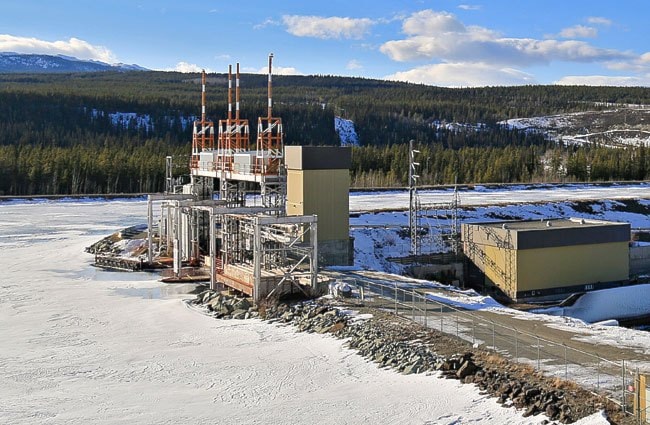Yukon Energy will decide by the end of this year whether or not to move ahead with a proposal to raise the limits on the water levels in the Southern Lakes.
The plan, which would increase water storage in order to reduce our winter reliance on diesel when hydro power generation falls short, requires amendments to the utility’s water license.
Yukon Energy president and CEO Andrew Hall said this week that the company will complete a “focused engagement process,” including one-on-one meetings with residents and discussions with First Nations and other stakeholders, before deciding whether or not to take the plan to the Yukon Environmental and Socioeconomic Assessment Board and the Yukon Water Board for approval.
Under the existing license, the utility spills water through the summer and fall in order to avoid exceeding its storage limits in the lakes. With an increased storage capacity, Hall said, Yukon Energy could hold that water back and use it to generate power in the winter months instead of wasting it.
“This project is really about squeezing more energy from our existing assets,” he said.
The proposal calls for the upper storage limit to be increased by 30 centimetres in the late fall, and for the minimum supply level to be dropped by 10 centimetres in spring, allowing the company to hold back more water for longer in the fall and to let the lakes fall a little lower in spring, before the freshet begins.
Those changes would create seven additional gigawatt hours of power, Hall said - enough to power 600 to 800 homes. The move would also save $2.3 million and 5,600 tonnes of greenhouse gas emissions from diesel fuel.
Hall noted that from mid-May to mid-August, the dam is open and the water levels in the lakes are unregulated - and that they often naturally rise higher than Yukon Energy’s proposed new limit. They did so in both 2012 and 2013, while the 2014 levels rose higher than the existing limit but didn’t reach the proposed mark. The 2007 floods saw levels in the lakes exceed the proposed new limit by more than three-quarters of a metre.
Hall acknowledged that there may be consequences from the change. “We do expect some subtle impacts in terms of shoreline erosion and from groundwater flooding.” That’s why the company plans to meet one-on-one with the residents who would be affected, in order to discuss mitigation.
Yukon Energy has conducted studies on the change’s impact on fish, birds, wildlife, wetland systems, shoreline erosion and groundwater flooding, he said. If the proposed changes go ahead, the utility would invest in shoreline structures to prevent erosion, and would work with residents to protect their basements.
About 100 properties stand to be impacted by potential groundwater flooding, according to Yukon Energy’s studies. Six stretches of shoreline - two along Tagish Lake, and four on Marsh Lake, encompassing 1,505 metres of shore and 51 properties - could be affected by erosion.
In 2012, residents formed the Southern Lakes Water Level Committee, and that group held a series of public meetings on the proposed changes throughout 2013 and 2014. It found that Southern Lakes residents are, overall, not in favour of the change.
In their final report, the committee members wrote: “The communities have said repeatedly over this past two-year period they are not in support of this concept. The question, ‘Why are we not looking at alternatives?’ has been asked many times.”
“Do not change the lake levels any more than they have already been altered,” they wrote. “Listen to, hear and communicate to come to a collaborative decision on alternate sources of energy.”
“We know that this has been a somewhat contentious subject for some stakeholders,” Hall said. But he added that the utility had to balance a lot of different factors in its planning. The question they have to answer, he said, is: “Is this a good project for Yukoners in general?”
Shoreline erosion is already happening, he added, with residents paying out of their own pockets to mitigate it. This way, Yukon Energy would foot the bill.
If the utility goes ahead with the proposed changes to the water license and gets them approved, the earliest the new plans would take effect would be fall 2017.
